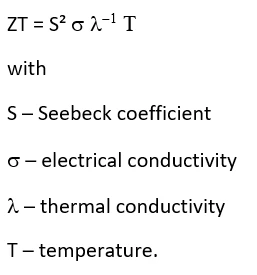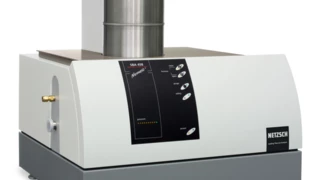Glossary
Electrical Resistivity
Electrical resistivity or electrical resistance is a fundamental material property that quantifies how strongly a given material opposes the flow of electric current.
A low resistivity indicates a material that readily allows the flow of electric current. The SI unit of electrical resistivity is the ohm-meter (Ω⋅m). The reciprocal of electrical resistivity is the Electrical Conductivity (SBA)Electrical conductivity is a physical property indicating a material's ability to allow the transport of an electric charge.electrical conductivity, which measures a material's ability to conduct an electric current.

Do you have any questions?
Suitable products for your measurement
Figure of merit (ZT value)
The efficiency of thermoelectric materials/devices is characterized by the figure of merit, ZT:
The efficiency increases with the value of ZT. There is no theoretical upper limit to ZT, and as ZT approaches infinity, the thermoelectric efficiency approaches the Carnot limit. However, no known thermoelectric material features a ZT>3 (as of 2018). The higher the efficiency, the higher the electrical energy generated by using wasted thermal energy (e.g., in thermoelectric generators, power plants or solar thermal energy generation).
The goal of material researchers is to find a thermoelectric material with the highest possible Seebeck coefficient, highest possible Electrical Conductivity (SBA)Electrical conductivity is a physical property indicating a material's ability to allow the transport of an electric charge.electrical conductivity and lowest possible Thermal ConductivityThermal conductivity (λ with the unit W/(m•K)) describes the transport of energy – in the form of heat – through a body of mass as the result of a temperature gradient (see fig. 1). According to the second law of thermodynamics, heat always flows in the direction of the lower temperature.thermal conductivity at the same time. This poses a great challenge because electrical and Thermal ConductivityThermal conductivity (λ with the unit W/(m•K)) describes the transport of energy – in the form of heat – through a body of mass as the result of a temperature gradient (see fig. 1). According to the second law of thermodynamics, heat always flows in the direction of the lower temperature.thermal conductivity have a direct proportionality.
All properties required for the characterization of thermoelectric materials can be measured using the NETZSCH LFA systems along with the Electrical Conductivity (SBA)Electrical conductivity is a physical property indicating a material's ability to allow the transport of an electric charge.SBA 458 Nemesis®®.


